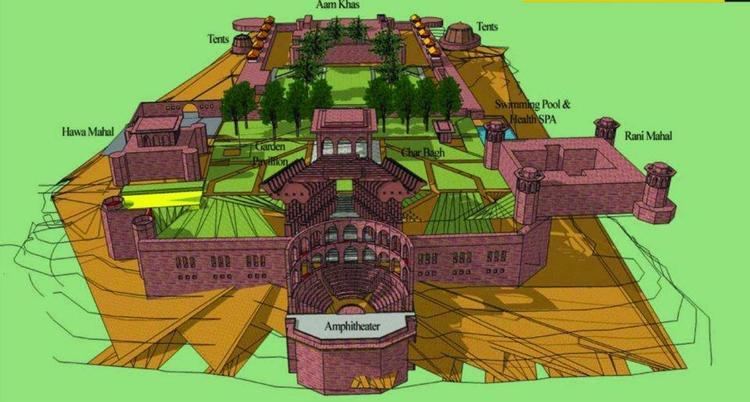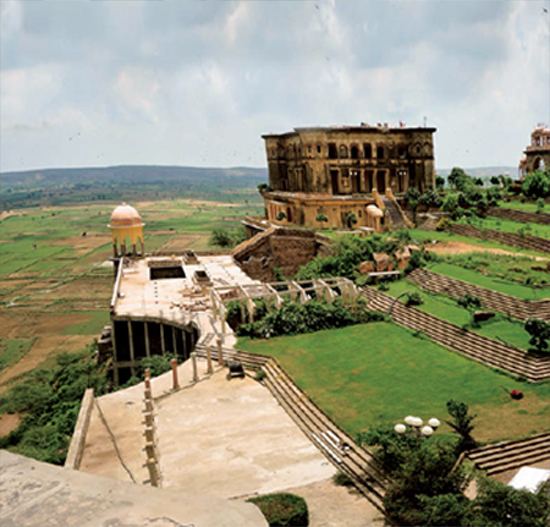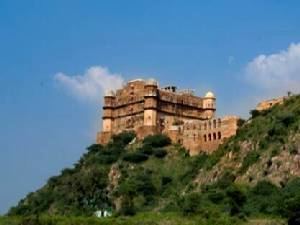Country State | Language spoken Hindi District | |
 | ||
Map of Tijara
Tijara(Hindi: तिजारा) is a city and a municipality in Alwar district in the Indian state of Rajasthan. Tiara Is in the NCR Tijara is situated 48 km to the northeast of Alwar. The nearest railway station is Khairthal. Bhiwadi is a census town in Tijara tehsil.This is the biggest industrial area of Rajasthan. Tijara is a part of the Ahirwal region and dominated by Yadavs & Meo.
Contents
- Map of Tijara
- A journey to tijara fort
- Trehan apna ghar shalimar trehan home developers alwar tijara road bhiwadi
- Geography
- Demographics
- History
- Jain Temple
- Nearby towns
- References

A journey to tijara fort
Trehan apna ghar shalimar trehan home developers alwar tijara road bhiwadi
Geography

Tijara is located at 27.93°N 76.85°E / 27.93; 76.85. It has an average elevation of 291 metres (954 feet). Ishroda is biggest village in population and area in Tijara tehsil. Tijara is easily reached from the Daruhera-Alwar road.
Demographics

As of 2001 India census, Tijara had a population of 19,918. Males constitute 53% of the population and females 47%. Tijara has an average literacy rate of 62%, higher than the national average of 59.5%: male literacy is 72%, and female literacy is 51%. In Tijara, 18% of the population is under 6 years of age.
History
The name Tijara was derived from "Raja Tejpal" descendent of Anangpal Tomar. The Tomars are the desecendent of Raja Tejpal.
The mention of Tijara is found in the book, 'Mirat ul Masaud', which relates how Saiyad Ibrahim Mashhadi Barah Hazari (died 421 AH / 1030 AD), an officer of Sultan Mahmud of Ghazni, in A.H. 420 (A.D. 1030) attacked Dhundgarh near Rewari, the Raja of which fled to his kinsman Rao Tej Pal Ahir of Rewari. The latter, in a night attack, killed Saiyad Ibrahim, but his disciple Ghazi Saiyyad Salar Masud compelled Tej Pal to fly to Tijara, where, in a battle, three relatives of Salar were killed. The tombs of some associates of Syed Mohammad Dost (Nana Barah Hazari), Rukn Alam Shaheed, Roshan Shaheed and Bhakan Shaheed in and around the town of Tijara are now places of pilgrimage.
Another tomb of the cousin of Saiyad Ibrahim Mashhadi (Barah Hazari), Syed Hameeduddin can also been seen at Kot Qasim (20 km away from Tijara), who was going as injured after the battle of Tijara to Rewari.
A sanad (decree conferring title of property) of Akbar's time speaks of "Tijara Shahbad" as though they were the principal towns of a district.
Also in the Ain-i-Akbari of Mughal King Akbar we have mention of the Khanzada Rajputs tribe living in Tijara where they occupied a brick fort along with 405,108 biggas of land of which the annual revenue was rs 11,906,847. The tribe had 400 cavalry and 2000 infantry soldiers at its disposal. Tijara was a part of Mewat, which was ruled by Khanzada Rajputs. In 1402, after the death of Wali-e-Mewat Raja Nahar Khan, his kingdom was divided among his 9 sons.His son Malik Alaudin Khan became the Jagirdar of Tijara.
History bears the testimony of the fact that Dehra -Tijara was a well-developed region. The discovery of the image of Shri 1008 Bhagwan Chandraprabhu in 1956 has a remarkable history.
The city was largerly inhabited by Ahirs or Yadavs since ancient times. The Yadav's from Tijara are settled in villages of Delhi. In 850 Vikram Samvat, Yadav King Charu Rao was the king of Tijara. In around 1043 A.D, the family of King Harpal of Tijara, settled in the Dabur area of modern Delhi. This village is called Surheda. Since their connection with the ruler's of Tijara, people of these villages writes Rao as their surnames. Khanzadas Community in large number also lived in this town before partition in 1947.
Jain Temple
In 1956, the excavation work was taken up for widening of the roads. While digging, a small "Talghar" was found. Late Smt. Saraswati devi w/o Late Biharilal jain discovered an idol on Shravan Shukla Dashmi (16:08:1956). This image bears the date "vaishakh shukla 3,1554 vikram samvat". Later on with the grace of Acharya Shri VimalSagar Ji maharaj, one white idol of Bhagwan chandraprabh was discovered on 29:3:1972. Tijara Fort has now been converted into a heritage hotel by the Neemrana Hotels group.
